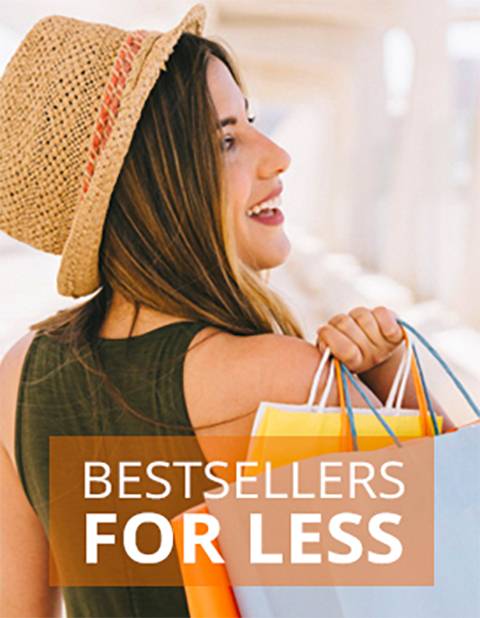Latest Blog Posts
Top rated

Another Blog post for your ERAFAV theme
Another Blog post for your ERAFAV theme
Packaging Branding that stands out- Ensure that the package used to pack the product stands out. At tola all aour packaging materials are the same, clearly branded with our logo and contacts. Our packaging is designed to tell our brand story and what we stand for, we use creativity and embrace innovative sustainable ways of packaging. Our vendors are required to use the tola branded bags for all their products.
- Create a memorable unboxing experience, be a wow! merchant As a vendor ensure that the customer experiences the magic of unpacking a special gift as they open the product that they have bought. This can be achieved by adding a personalized thank you note thanking them for buying the product from you. A handwritten note would bring sweet memories to everyone as all we all do is send short phone messages and whats app texts, Adding a bonus gift or small sample of your upcoming products would also create some magic, you could also consider adding a colorful tissue or item of craft that will just add color to the unboxing experience.
- Using strong branded tape that is also tripple duty and ensuring that all items that are sensitive and fragile are clearly marked out. This will communicate to the client the extra care that has been taken to package and transport their valuable products.
- Using friendly and cozy void fillers while packaging the products. The could range from bubble wrap bags, bamboo, wheat straw, small colourful paper, kraft paper and gold dust. You may also consider green packaging and use environmentally friendly fillers. Ensure that the customer unboxing experience is pleasurable.
- Strive to use flexible packaging. Unless the item is really big and would require a carton / box packaging strive to use flexible easy to carry packaging. Consumers prefer to carry small packaging and it would also help in redusing waste!
- Whem anything fits right it makes you happy. Ensure you use packaging that fits the product. The packaging should not be too small neither too big, just the perfect fit.
- Consider the weight of the product as you package it. The heavier the product the mpre sturdy and strong the packaging should be.
- When you are shipping internatinally consider the standard packaging
standards of the shippingh company you will be using and the effect of the additional cost to the product. - Consider all the types of packaging like corrugated cardboard, padded
mailers, normal boxes and polymailers and think which packaging is going to resonate with yoiur product and customer.
A product might be fantastic with an equally killer logo, but awesome, trendy, on-brand, creative packaging is what really seals the deal. In fact, a box looks on a shelf or how a container feels in our hands can easily be the #1 factor in our decision to purchase a product.
Unlike other types of design, product packaging design results in something tangible. It’s more personal: we hold it, share it and carry it. In fact, packaging has become so personal that there are huge fanbases that just love packaging. Have you heard of “Unboxing” videos? Dozens of YouTube channels exist just to showcase the packaging of products like the iPhone, Apple Watch, PS4 and more.
Ecommerce store owners understand the importance of marketing and developing a strong web presence. They create beautiful storefronts, invest in advertising campaigns, and build email marketing sequences to attract and win over customers.
But look at their blogs and you’ll notice that a lot of them—especially B2C ecommerce sites—either don't have a blog or don't have a content marketing strategy.
This can be a missed opportunity, especially in ecommerce where many niches aren't yet overly saturated with high quality and engaging content.
If you're looking for inspiration about how to blog for your own ecommerce business, we’ll be taking a close look in this post at 8 different examples of outstanding blogs run by ecommerce stores, including the content they create and the strategies behind them.
But first, let's talk about what a blog can do for your business.
What blogging should be
A thoughtful, deliberate blogging strategy can help you nurture customer relationships, generate recurring inbound traffic, and give you a way to promote new products and services while building your brand.
Blogging also gives you a lot of room for creativity. You can go many different routes with your blog, with different types of content, storytelling, and distribution tactics to make your blog beneficial to your business.
In fact, it's likely for this reason that a lot of ecommerce sites struggle with blogging. Simply publishing a few posts a month, after all, isn't enough to regularly bring traffic to your site. You need to develop a strategy in order to get to your blog to that point.
Your blog should:
- Add value. Your blog should contain content that your target audience wants to read. Entertain them, educate them, share news, or do a little of all three. Just remember that it’s not about you, it’s about your customers and their wants and needs.
- Have clear goals. What do you want to get out of blogging? Ideally, you should be focused on bringing readers in through search engines and social media, building a relationship with them, and then eventually driving sales.
- Build upon your brand. Blogs can be used to not only support your brand, but to help establish it. Blogging gives you a voice and you can harness storytelling to connect with users and make your brand stand out.
- Be consistent. If you can only put out one post a month, that’s okay. Just make sure that you’re making time to hit that once-a-month mark regularly.
Your blog should not:
- Read like an over-hyped sales pitch. People have come to your site to look at your products. If they want more information on what you sell, they’ll head to your product pages, not your blog (though your blog posts can direct them there).
- Consist only of product photos. It doesn’t matter how sought-after your products are, you shouldn’t just have blog posts comprised of nothing but images. Even the most popular photography bloggers—whose images are the obvious focus—will often complement their photos with written storytelling to establish context and create an emotional connection.
- Look random and disorganized. Diversity in what you publish can help you attract multiple types of readers, but it should all fit under the umbrella where your products and your audience's needs overlap. Everything should feel connected to your brand and organized into categories that you consistently contribute to.
Brands that can attract an audience through education, inspiration, or entertainment can generally benefit from blogging in some form or another.
But at the end of the day, you'll have to carve out a way to blog that works for you, as these 8 ecommerce businesses have done.

 Login with Google
Login with Google



